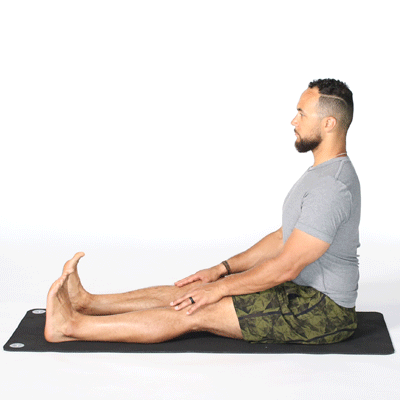
Yoga injuries are quite common but do not need to be serious. There are several ways you can avoid common injuries. Here are a few things to avoid: Over-stretching the major muscle groups in your neck and back. Also, avoid stretching your hips or hamstrings too much.
You should not over-stretch the major muscle groups of your back.
It is important to not overextend your major muscle groups when you stretch your back. This can result in micro tears and strained muscles. Because stretching should not be painful, but comfortable. Avoid holding your breath. This will cause the muscles to tighten. The best way to relax your muscles is to breathe deeply and through the nose. You should not stretch the muscles that have been injured for too long. This will delay the healing process. Instead, apply heat or ice on the affected area. Next, gradually return the muscle to your normal stretching routine.

Do not over-stretch any major muscles in your neck.
It is important to avoid injury to your neck when performing advanced yoga poses. These muscles can become overstrained, leading to neck strains and sprains. This can also lead to chronic pain. There are many ways to prevent neck injuries.
Over-stretching the hamstrings
Over-stretching the Hamstring muscles during yoga poses can cause injury. Many people strain their hamstrings too much by stretching too far or straining the inner thighs.
Over-stretching the hips
Tears are the most common injury that over-stretching could cause. This injury is very common in yoga and can happen during warm-up. In these classes, the temperature is often high enough to over-stretch muscles before they are fully warmed up. Participants should maintain a range of motion of 75 percent or less during the warmup phase in order to avoid injury. This will allow the muscles to rest and warm up before moving on to more strenuous activities.
Moving in a range of motion
Yoga is best practiced in a wide range of motion to prevent injuries. It helps your body prepare for a wide range of movements. You can therefore move more easily and with less injury. Yoga can also help with agility and endurance.

Case studies
Yoga-related injuries continue to rise. Between 2001-2014, 29,590 people were treated for yoga-related injuries in hospital emergency departments. The majority of injuries were strain/sprain. Younger participants were more likely to sustain injuries than older ones. Both young and old can benefit from a regular yoga practice.
FAQ
Are there many types of yoga?
Bikram Yoga, also known as Bikram heated yoga, is the most common type of yoga. Other forms include Hatha, Ashtanga, Vinyasa, Iyengar, Kundalini, Yin, Power Yoga, Flow Yoga, Reiki, Pilates, Restorative, Aerial, etc.
How long should a class of yoga be?
Yoga sessions generally last 45 minutes to one hour. The type of yoga you do will affect the time taken. 45-60 minutes should be enough if your goal is to concentrate on strength-building activities. For relaxation and meditation, however, an hour may be needed.
You can also vary the length of your yoga classes depending on which type you are taking. Some focus on quick movements while others stress slow, deep stretches.
What kind of music can you hear in a yoga room?
Many yoga studios play soft instrumental music during class. This is intended to create a calm environment conducive to learning.
Other studios prefer more upbeat music, such as hip-hop, jazz, rock, etc.
Pay attention to what you are listening to. Sometimes music can distract us from our practice.
Can I do Yoga every day, even as a beginner?
Yoga can be a great way of strengthening your body and stretching. It is also a great way to relax and release stress. Yoga doesn't require you to be an expert. Yoga for beginners should be done three times per semaine, for 20 minutes.
This will allow you to get started. You can gradually increase the amount you spend practicing.
Statistics
- According to the Agency for Healthcare Research and Quality, falls are incredibly common among older adults in nursing facilities. Even the simplest ones can increase the risk of death (24). (healthline.com)
- About one in seven U.S. adults practiced yoga in the past 12 months, according to a 2017 national survey. (nccih.nih.gov)
- According to calorie estimates calculated at Harvard Medical School, the average 125-pound person burns about 120 calories in a half hour of hatha yoga, and a 185-pound person burns about 178 calories in that half hour. (everydayhealth.com)
- The American Psychological Association recently shared that 84% of American adults feel the impact of prolonged stress (5). (healthline.com)
- The people in the yoga group were 37 percent more likely to have quit smoking by the end of the 8-week program. (nccih.nih.gov)
External Links
How To
Where is the best spot to practice yoga?
There's no right or wrong way to practice yoga. Everybody is unique. Only you need to choose the positions that feel most comfortable.
These are some of the most common positions:
Standing poses - These are great for beginners as they allow you to view your body from many angles. They also make it easier to focus on breathing.
Forward bends – Forward bends can be used to loosen tight areas in the body. You can either do them lying down or while sitting.
Backbends: Backbends can be considered advanced poses. Your instructor will be able to help you if you are interested in trying one.
Inversions – Inversions require you to balance upside down. This is a challenging but rewarding type of yoga.